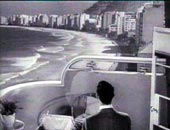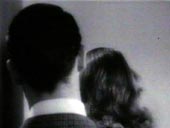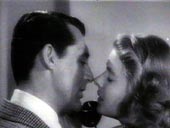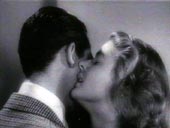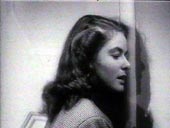 |
|
| 16:9 in English:
Bordwell on Bordwell: Part I - Hitchcock, Hartley and the Poetics
of Cinema By JAKOB ISAK NIELSEN David Bordwell may very well be the most well-known film scholar of our time. It is probably safe to say that most - maybe all - film students at one time or other in their studies will encounter a book that he has authored or co-authored. His productivity inspires awe, the quality and range of his work even more so. That is not to say that his writings are popular across the entire field of film studies. Bordwell's writings have certainly received their share of critical comment - sometimes stimulated by the polemical nature of his positions as set forth in Making Meaning* or in Post-Theory, which he co-edited with Noël Carroll. Few film scholars have received so much attention and criticism from other scholars as Bordwell. The clarity and precision of his writing and of his claims are, of course, one of the reasons why his work remains so open to criticism, yet these same features ensure - God forbid - that we will never see "The Bordwell Reader" on the shelves of university bookstores. He has variously been labeled a cognitivist, a formalist and a narratologist or a combination of these. The categories are porous and his varying lines of inquiry give different emphasis to each aspect. However, as part I of the interview and the ones to follow will reveal, the term poetician may be more appropriate for both the type of research he pursues at this stage of his career and the perspective in which he views a large bulk of his former research. The interview was recorded May 17, 2004 only a week after David Bordwell had completed his final seminar at Communication Arts, University of Wisconsin-Madison. Since Bordwell was retiring, he had been asked to do a seminar on his own work. Nicknamed Best of Bordwell the official name of the course was The Poetics of Cinema and a great deal of this interview is an offshoot of topics raised during the semester. - - - - - An era is about to end. You've just wrapped up your last class at ComArts after teaching at UW for more than 30 years. You are still young - in your mid-50s ... I'm 56, yes. ... and you don't strike me as the kind of man who will rest on his laurels... [Laughs] If I could only find some laurels to rest upon I'd rest [looks around on the floor]. What will you actually do now that you have retired from UW? I want to continue to do research in film of course - write and read about cinema. And I also want to expand some of the things I've done. Areas I've explored, I'd like to explore more deeply. So for instance, I'm more and more interested in seeing films from the 1910s by Bauer and other filmmakers of the period. Also I'd like to attend more film festivals. An academic schedule is great and I can't complain about it, but there are so many film festivals in the world that show films that I often had to miss because of my teaching schedule and so forth - films that were important for my research or just for my own development. So basically, I'll do what I was always doing but with a more flexible schedule. You started teaching at UW in 1973 but you've been writing criticism for even longer. One of the earliest articles I've found is on Hitchcock's Notorious [1946] ... Yes, that was my first article published outside of my local scene. I wrote film criticism for my college newspaper from 1965 to 1969 and I think this was the first article that was published in an actual journal. Yes, it was published in Film Heritage in 1969. It's been 35 years since the article appeared. Can you highlight continuity and change with regards to the lines of inquiry that you have been pursuing since the late 60s? I would say that throughout my study of film, three areas - they are not exactly issues or problems - but three areas have interested me. One is the study of form - of cinematic form in the broad sense, particularly narrative form and handling of narrative issues like point-of-view, characterization, patterning of narrative structure, things like that. And then secondly, I've been interested in what we might call film style, the aesthetics of the use of the medium. And then thirdly, the spectator and issues of how spectators understand films. Either how they make sense of them at some very basic level of narrative comprehension but also in terms of how spectators interpret films; how they try to ascribe broader significance to the films that they see. And in an odd way - although of course, I didn't have anything like a program when I started writing, I was just an undergraduate then - that essay on Hitchcock that you mention has parts of all three. Obviously, when you're dealing with Hitchcock, you're dealing with the manipulation of the spectator. You're dealing with how the spectator is given certain kinds of information, how certain types of attitudes, emotions and expectations are generated and then how those are creatively manipulated. I was particularly interested in something that I thought was a big discovery but which at least now everyone knows about, which was how he uses point-of-view - optical point-of-view - to switch pieces of information from character to character. I showed the film - Notorious - for our film society and while it was running, the first two or three shots: point-of-view shots. Everything after that is structured around different characters' optical point-of-view. Although I think we commonly recognize that now, in the late 1960s we were only just starting to realize the way Hitchcock was using film style to construct points-of-vantage on the action ... and then thirdly, of course, narrative construction and how suspense is generated through shifting larger conceptions of point-of-view, not just the stylistics of optical p.o.v.-shots but also larger blocks where he shifts between Cary Grant, Claude Rains and of course Ingrid Bergman in terms of what they know and what we know. I of course didn't articulate these ideas in a very rigorous way then - it was really just a piece of practical criticism. |
* See for instance volume XVII, no. 2-3 of Film Criticism, a double issue that features responses to Bordwell's 1989-book Making Meaning. |
||||||||||||||||||
|
I couldn't help but notice some similarities with your essay on Hal Hartley, which is one of your most recent publications.* In the essay on Notorious as well as the Hartley-essay you're concerned with the orchestration of glances and both articles actually refer to an Antonioni-influence. Yes, there is a scene where Cary Grant learns about his mission. It starts as a love scene and ends as a scene of separation. And the way Hitchcock stages it in terms of the edges of the frame really looks forward to the kind of things that Antonioni would do more heavily and systematically in his films. With Hartley ... Hartley has confirmed to me that he was interested in Antonioni. These similarities are almost accidental, I suppose, but you have to remember also that for my generation - this is very much a piece from the 1960s - the American auteurs were Hitchcock and Ford, less Hawks but Hitchcock and Ford. And the foreign directors that were foremost important were the Italians and the Scandinavians so it would be natural for me to look for analogies in that rather small search base. Now it would be more interesting to look at Notorious in terms of not only Hitchcock's earlier films but also in relation to the rise of film noir in the United States. The film is very much a film noir and it seems to be playing off some of the things that Hitchcock was developing with the Cary Grant-image or -persona that were also there in Suspicion [1941] for instance. There'd be a much richer context to draw upon now than we had back then. It's interesting... the more I think about it, the more Hitchcock was a key influence to the people of my generation and people who are a little older than me like Scorsese and Coppola because he showed that you could make complex and sophisticated films in the American popular tradition. Many other American directors have done that but with Hitchcock it was somehow more obvious. His films had a very salient style. They were identified as personal films - I mean Hitchcock was a kind of brand name in the 60s - and there was an awareness that Hitchcock, even as he was making more so-called commercial projects, was still bringing in his own concerns and presuppositions. So there is a way in which Hitchcock provided a model for both young critics and young directors - apart from De Palma who was obviously influenced - but even for people like Scorsese or James Toback. People like this who were part of the New York film culture scene would see Hitchcock-films and say: "here's somebody who actually has it both ways. He makes genre pictures, he makes films that audiences love, but he also makes very personal films and very artistically ambitious films." And for critics - apart from film directors - we saw Hitchcock as somebody who was on the level of the European masters. For us there was still this interplay of the popular and the personal - though I think there was probably less emphasis on his being a popular artist and more emphasis on him being an expressive and personal artist than there should have been. Nevertheless, there is a sense in which Hitchcock showed a whole generation of both filmmakers and film critics the art of cinema. He seemed so eclectic and pluralistic in his approach. He could make films with 8-9 shots like Rope; he could make films with very finely broken down montage like Rear Window. He seemed to be just a master - a virtuoso of the film medium - and he was almost our film school. Hitchcock - more than any other filmmakers, even European filmmakers - was the director people felt they could learn most about cinema from. Hitchcock doesn't play that big a part in your most recent research. |
* The essay on Hartley is published in Danish in this issue of 16:9. Not yet published in English.
|
||||||||||||||||||
|
No, I think it is fair to say that Hitchcock is a very, very good director but I think he has been overrated by others as well as by me [laughs]. The more I've come to appreciate other filmmakers, the more Hitchcock's work seems to me - without being any the less pleasurable - not absolutely of the very first rank. And I also feel that Hitchcock... it's a bit like writing about a major figure in literature like - I won't say Shakespeare - but like Dickens or Tolstoy. There has been so much written on Hitchcock that even just to comprehend the secondary literature would be a large part of one's lifetime. I prefer now to work on directors who are underappreciated; on directors about which I feel I have something original to say. I really don't think I have anything original to say about Hitchcock [laughs] ... well, with Rear Window I feel that I was able to bring together some insights about filmic narration around Rear Window but I would nowhere claim that it was a complete or adequate reading of the film.* I just wanted to use it as a familiar test case really. But in terms of actually shedding light on Hitchcock the way I would like to think I've shed light on, say, Ozu or Eisenstein or possibly Dreyer, I don't feel I have anything to add to the discussion. I want to shift focus a little bit to your current "hobby horse" [laughs], what you call the poetics of cinema. In your article on Chinese film in Post Script you present the approach in quite broad terms. What you propose is this: "To ask about the poetics governing any filmmaking tradition is to pose at least four broad questions":
|
* See Narration in the Fiction Film (Madison: University of Wisconsin Press; London: Methuen 1985).
|
||||||||||||||||||
|
It is a perspective. I don't see it as a research project or even a research program stated that way. It is really a perspective. It is a way in which many researchers could come up with a variety of research projects or programs.* I wanted to just mark out an area of certain kinds of questions that one could ask about cinema. So for instance to take the narrative aspect of that perspective, I guess I would say: "well, there are many theories of narrative..." And I'm not proposing that we simply - if you are someone working within the poetics of cinema - accept or subscribe to one narrative theory over another. There'd be many possibilities. The same thing goes for the conceptions of style, conceptions of the spectator and so forth. It was really an effort to just create a virtual space within which a lot of different theoretical projects could be developed. My own perspective, my own theories I've laid out in particular works. I think of narrative in a certain way; I think of style in a certain way; I think of spectatorial activities from a broadly cognitive standpoint; I think of history in terms of norms, shared community norms within institutions of filmmaking, ways in which filmmakers communicate with each other and challenge spectators. But those aren't the only ways you can think about those issues. There are other theoretical angles you could pursue. So what I wanted to do in that piece was simply - for an audience I felt didn't know the perspective at all, mainly Chinese film scholars - to create a very broad brush. It'd be nice if some day there was a body of work within this poetics of cinema so that one could actually say: "well, there are these different schools of cinematic poetics or there are these different theories of cinematic poetics and so on." That doesn't exist now although I do think that without calling themselves poeticians, a lot of classical film theorists were working in this domain. If you think of someone like Bazin who is usually thought of as a theorist in terms of abstract theory, realism and so forth, he actually did a lot of empirical work. He proposed some very bold hypotheses about the history of film style, about how narrative worked in certain bodies of films like the neorealist films. |
* It is not an entirely new perspective but Bordwell has probably given it more prominence and substance in later years. For an early statement see "Lowering the Stakes: Prospects for a Historical Poetics of Cinema." Iris, no. 1 (1983): 5-18.
|
||||||||||||||||||
|
Even about the development of average shot length* ... Exactly! Bazin was doing the kind of work I would consider part of a poetics of cinema. Eisenstein of course is much more explicit about this. I think that Eisenstein's writing, but also his teaching, were very much coming out of the formalist tradition of the 1920s, which was itself self-consciously a cinematic poetics-tradition. And he was responding to people like Shklovsky and Eikhenbaum and Tynianov in terms of the practical exercises he set his students as much as his actual theories.* I would argue that Eisenstein has a kind of expressive poetics of cinema where his concentration is on stylistics for the most part and the effect on the spectator, those two issues. And he wants to argue that style is the manifestation of an expressive quality in cinema and it gets transmitted to the spectator through a series of [compositional strategies, ed.] I think that many classic film theorists who are normally classified as being "aestheticians of cinema" - working on film aesthetics in so far as they were inquiring about the issues of construction, norms, how spectators take the films - are certainly doing work that I would consider to be in the realm of poetics. And I think some contemporary writers are working in this domain. They may not chose to call it that and that's fine, they don't have to, but in the sense that these people are starting to focus on some of these problems in a self-conscious way does suggest that this is becoming a viable scholarly avenue. Perhaps we can also mark the borderlines of the poetic avenue. There are certain scholars who work on the limits of a poetics. Say for instance someone like Robin Wood who has a keen eye for the use of stylistic devices but who - after registering a particular application of a stylistic device - will move outside of or beyond the poetic realm. Right, right. I don't think that Robin is interested in causal explanations at the level that I'm interested in. That would be my argument. I would say that a poetics - at least a historical poetics of cinema - tries to tell a fairly detailed causal story about why form and style are the way they are. I think that there are two levels - at least two levels - to Robin's work. One is - as you say - a keen eye for stylistics. Though I have to say that ... Not always that keen? |
* See "The Evolution of the Language of Cinema," in What is Cinema?, vol. 1. (Berkeley: University of California Press, 1967).
* As to Eisenstein's teaching, see for example "Mise-en-shot" in Lessons with Eisenstein, ed. Vladimir Nizny (London: Allen and Unwin, 1962).
|
||||||||||||||||||
|
Yes, or that perhaps the same claims are reiterated rather than going deeper. For instance: "Mizoguchi the long take-director." I'm not sure that Robin has gone much beyond that observation. You can get a lot out of that but one would have to go down some levels of specificity to get more precise conceptions of how he uses long takes. Nevertheless, I think what Robin tends to do is to look at style, look at character particularly as a narrative function - character in relationship to some larger conceptions of how narrative works - but then I think he moves to the hermeneutic model.* In the old days, his explanations were tied to authorial vision, to conceptions of order and disorder as they ran through the work of, say, a Hitchcock or an Arthur Penn. Now in a way he is still interested in order and disorder but from a more ideological perspective. I regard Robin Wood as a very brilliant practical critic. He's someone who looks very sensitively at movies. He is passionate about works and he wants to write about the works that move and intrigue him but I think he backs away from a systematic formulization of his perspective except in so far as it has some political dimension. |
* For an example of this move in Wood's work, see his interpretation of Ophulsian camera movement in "Ewig hin der Liebe Glück," in Personal Views: Explorations in Film (London: Gordon Fraser, 1976).
|
||||||||||||||||||
|
My own view is that there is more to be done before one plays the hermeneutic card. I would like to have a set of concepts that are clear and fairly well-defined and see how much one can squeeze out of them at various levels. So for instance... if you think about the idea of personalized causality in the classical studio era. That is a pretty obvious observation and the concept itself is not very elaborated but once you start to work on just that, you start to think "how many aspects of the film seem to depend upon a conception of causal connection - particularly manifested in terms of personal interaction?" A great deal of the film is explicable that way - principles of construction of the film are explicable that way - so that you can even get down to transitions between scenes: dialogue hooks, dangling causes etc. So my sense is that Robin Wood is not really interested in those questions. He is not interested in what we might call the constructional principles of works. He is more interested, I think, in particular works and what he can find in them in terms of a critique of what he takes to be dominant ideology. And that's fine, that's perfectly legitimate but it is not the same kinds of questions that I'm trying to pose with this idea of a poetics of cinema. - - - - - Part II of the interview concerns the functions of film style. It will appear in 16:9, # 8 - to be issued on our website September 16th 2004. |
Bordwell also mentions Kristin Thompson's book Storytelling in the New Hollywood (Cambridge: Harvard University Press, 1999) as "a good example of how you can take a cluster of fairly straightforward concepts and see how much you can wring out of them in terms of critical tools that allow you to explain the architecture of a wide variety of films - to explain them in a functional sense."
|
||||||||||||||||||
|
|||||||||||||||||||
|
|||||||||||||||||||
 |
|
 |

